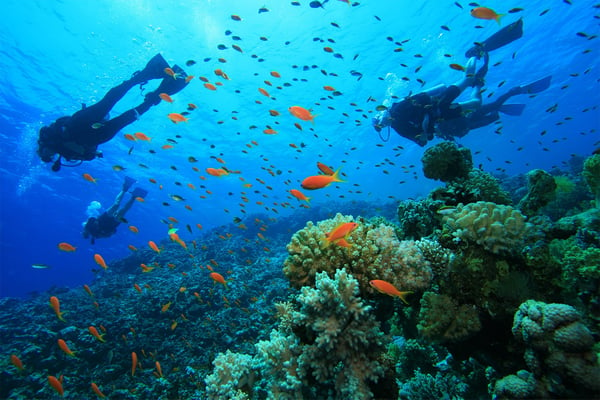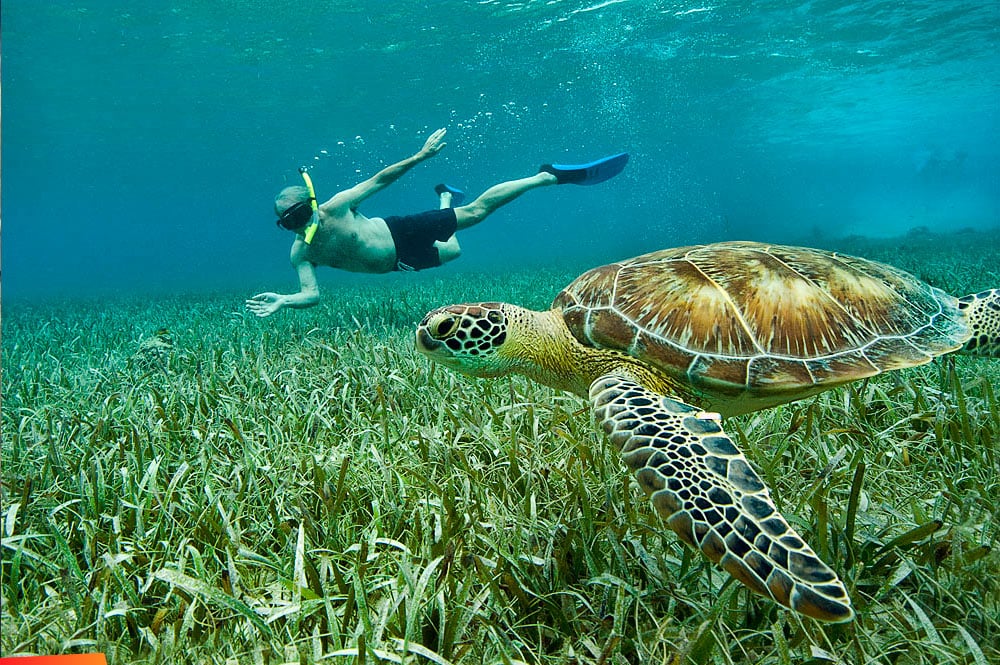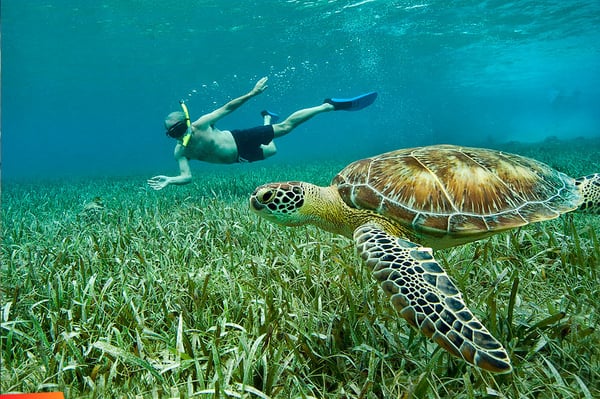The Coral Reefs of the world are something that are heard about often in today’s age, and especially around places like Belize. Around here these coral reefs are often commented on because off the coast of Belize is a 300km long Barrier Reef, the 2nd largest worldwide. Though why is it that people are so pressed about protecting these regions? Sometimes it can feel like you’re missing out on some piece of information that everyone seems to know about, or maybe you just can’t remember back to 9th grade science when you briefly learned about it. If you’re living inland or have only just recently moved to a place like Ambergris Caye, Belize, it can be difficult to understand the importance of these environmental regions and why if we have the power to protect them, we should. If you are relating to what’s being said here, then keep reading for a crash course on coral reefs.
What are coral reefs?

Coral reefs are large underwater structures that are composed of skeletal-like marine invertebrates commonly known as coral. These structures are relied on by fish and other organisms for shelter and food, and the nooks and crannies formed by coral provide space for reproduction and the rearing of their young. They can be found in many different parts of the ocean but the biggest are found in clear, shallow waters in the tropics and subtropics.
These areas are often referred to as the rainforest of the sea and this is because of the important role they play in the ocean’s biodiversity and the impact that they have on the greater environment. Though they account for only 1% of the world’s oceans, they are inhabited by about 25% of all marine species. In Belize’s Barrier Reef alone there are about 70 hard coral species, 36 soft coral species, 500 species of fish, and hundreds of invertebrate species. These estimates are only that, estimates, because it is believed that only 10% of all marine species have been discovered and therefore it is believed that these reefs contain even more of a diversity of species. With these small estimates though coral reefs are still found to support more species per unit area than any other marine environment, making them immensely important to sustaining the world’s marine life.
What do they do for us?

It’s relatively simple to understand why these marine environments are important for the sea life inhabiting them, but what can be more difficult is understanding how these systems benefit us, on land. The National Oceanic and Atmospheric Administration of The United States estimates that ½ billion people live within 100 km of a coral reef and are benefiting from its production and protection. To add on, The United Nations estimates that these reefs contribute $30 billion to the global economy, with the proportion being higher for those places like Belize which are home to such a large amount.
Economically these reefs are beneficial due to both fishing and tourism. In places like Belize, sustainable fishing practices contribute to the food that both the locals and tourists consume. A lot of these tourists come to areas like Ambergris Caye to experience the reefs for themselves and see with their own eyes the beautiful waters in which they call home. Another thing that these reefs provide for humans is protection as they act as a buffer for adjacent shorelines, protecting them from wave action, erosion, property damage, and other potential catastrophes.
What harms these structures?
Though these reefs can do so much for other marine life and us humans, they are not as durable as they appear; in fact, they are quite fragile and sensitive to change. Harm to coral reefs occur from changes in temperature, changes in ocean acidity, destructive fishing practices, agricultural runoff and other pollution, as well as invasive species, to name a few. With more human activity comes more of these practices and events occurring, leading to more harm being done to these important systems. Bigger corporations are finding ways to make their practices better for mitigating these effects and effects on the environment in general, but are there things we can do individually?
What can we do to help them?
Diving practices
To start let’s look at what we can do when we are in the areas that the coral reefs are located. The first and most obvious thing you can do is dive responsibly. Responsible diving starts with not touching anything. Not touching the marine life is important for both you and the animals. These corals are alive and stirred up sediments can smother them and lead to detrimental circumstances for the coral. It’s okay to not know a lot about the areas that you would be diving or snorkeling in, and that’s why many companies in the towns surrounding coral reefs offer guides to show you the area. These guides can both make sure you act responsibly around the reefs and as well they are able to explain why they feel their practices should be followed in these areas.
Sunscreen choice
When you’re diving and doing water activities near reefs, making the right choice for what products you put on your skin can have an impact. Sunscreen is something that everyone uses in the tropics and subtropics and in certain sunscreens the active ingredients such as oxybenzone and octinoxate can have a toxic effect on the coral and contributes to coral bleaching. Instead opt for a sunscreen that uses non-nano zinc oxide as their active ingredient.
Caring for the water and its inhabitants
Caring for the waterways around the world is important for sustaining coral reefs. Be it at home or near a coral reef, beach cleanups are always something that be participated in. They are simple, and during them you can really see the tangible affects you are having on the surrounding environment. Join some friends or an organization’s efforts, or even just do it as a solo Sunday activity.
When you’re at home, be conscious of the amount of water you use, as the less water used means less runoff finding its way back into the ocean; especially if you are someone who tends to use heavy chemicals in your household. And when you’re making choices about what’s in your kitchen, if possible, try to choose fish that has been caught through sustainable and non-destructive practices. By doing so you are using your dollar to show that you care about how your food is caught.
Now you know
Now that you know the whys to what people are doing to protect coral reefs you can start integrating them into your daily life. When the time comes to travel, visit Ambergris Caye, experience the Belize Barrier Reef, be amazed by its beauty, and follow these simple practices to do so responsibly.
If you’re considering coming to Belize for the first time, or coming back to Belize, be sure to visit one of these local favorites and book your stay with us at The Grand Baymen Resort. Simply go to reservations@grandbaymen.com.
We hope you found this article interesting. If you’d like to receive more great stories, sign up for our Newsletter, and you’ll be emailed once per month with informative articles written by our team to keep you informed about all things Belize.
When planning your stay in Belize, we can help you book exciting excursions such as snorkeling at Shark Ray Alley, Cave Tubing on the mainland, or flying over the Blue Hole.
Our knowledgeable team will assist you with any tour you would like to take while visiting Belize, so that you can just relax and enjoy the adventure. CONTACT US TODAY.
ECI Development delivers affordable luxury residence and resort communities in Central America, providing our clients with various premier lifestyle options from the Caribbean to the Pacific. ECI delivers inspired residences for adventurous souls.
Coupled with over 20 years of inherent corporate social responsibility in the communities where we work, ECI Development is building a sustainable business that is going to be around for the next 100+ years.






